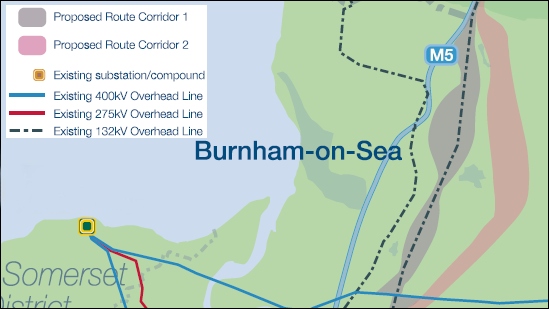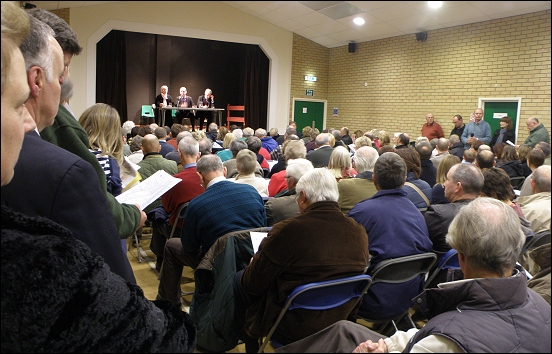Controversial proposals to build a 400,000 volt electricity line through the Burnham-On-Sea area are already hitting property prices along the planned route, it was claimed during a packed protest meeting on Sunday evening (December 13th).
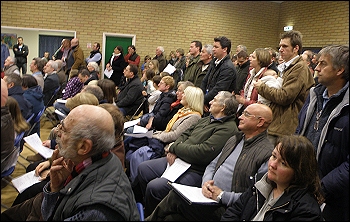 “Why would people want to buy a house here if they could be moving underneath a long line of 150ft pylons,” asked one villager during the latest public meeting held at Mark Village Hall.
“Why would people want to buy a house here if they could be moving underneath a long line of 150ft pylons,” asked one villager during the latest public meeting held at Mark Village Hall.
Another resident, Brian Shepherd, demanded: “My home is the closest in Mark to the proposed corridor of pylons – I want to know whether there is any provision for compensation.”
Burnham’s MP, David Heathcoat-Amory, told the meeting: “Some local people are finding it difficult to sell their houses in the area and it is possible that the plans are having an effect on values. Compensation may be available on a case-by-case basis.”
The comments came as campaigners stepped up their fight, with fresh proposals to bring well-known faces, such as TV presenter Carol Vorderman and senior politicians, into the area to pile pressure on National Grid to re-consider its plans for the 37-mile power line running between Hinkley Point and Avonmouth.
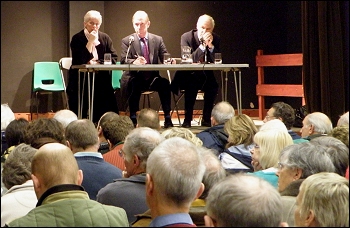 Two potential ‘route corridors’ for the 46.5m tall pylons have been identified, with one running through East Huntspill, Watchfield, Mark and Bason Bridge, while the second route runs further to the east.
Two potential ‘route corridors’ for the 46.5m tall pylons have been identified, with one running through East Huntspill, Watchfield, Mark and Bason Bridge, while the second route runs further to the east.
David Heathcoat-Amory told Sunday’s meeting both routes are “very objectionable” and he added that he is continuing to push National Grid to investigate other options, including an undersea route across the Bristol Channel.
Peter Gregory of Mark Parish Council re-emphasized that his council wants neither route to go forward, adding that both would adversely impact the village.
Local resident Andrew Mark asked why, if the proposed Hinkley Point power station has not yet been approved by planners, the new nuclear plant couldn’t be built nearer to the Avonmouth sub-station instead.
Lib Dem parliamentary candidate Tessa Munt again raised the issue of whether the pylons should be built along the “already blighted M5 corridor where just 36 homes would be affected between the M5 Bridgwater junction and the Loxford Gap.”
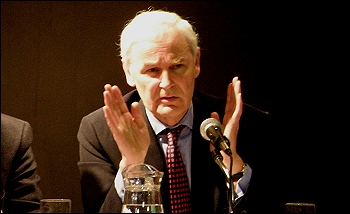 She also raised the issue of whether the pylons would impact local tourism and also said the pylons jeopardize the area’s bid to become a World Heritage site.
She also raised the issue of whether the pylons would impact local tourism and also said the pylons jeopardize the area’s bid to become a World Heritage site.
Local resident Maggie Gregory said the consultation process run by National Grid had been “flawed”, and she described the company’s public exhibition held in Mark as a “whitewash.”
First stage public consultation by National Grid will end on January 4th. Residents have until then to submit their comments.
Andrew Scott, Chairman of the ‘No Moor Pylons’ action group, told Burnham-On-Sea.com: “If we are to defeat these proposals we need a unified approach from the community. All members of each household need to write to National Grid, making their views known.”
